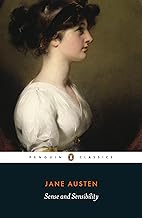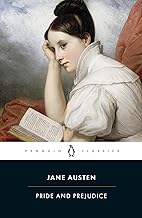
How to Read Jane Austen's Books on Reading order
How to Read Jane Austen's Books on Reading Order
Estimated Reading Time: 10-12 minutes
Introduction
Jane Austen, one of the most celebrated authors in English literature, has left an indelible mark on the literary world with her keen observations of society, love, and the human condition. Born in 1775 in Hampshire, England, Austen's works primarily reflect the social dynamics of the late 18th and early 19th centuries. Her novels, characterized by their wit, irony, and social commentary, delve into the lives of women navigating the complexities of love and societal expectations.
In this guide, we will explore three of her most significant novels—Sense and Sensibility, Pride and Prejudice, and Emma—and discuss the best reading order to appreciate her insights into human relationships, moral dilemmas, and the intricacies of social class. Each book offers a unique perspective on the theme of reading order, revealing how characters evolve and how their stories intertwine with the societal norms of their time.
Why Jane Austen's Perspective Matters
Austen's approach to storytelling is distinctively insightful, as she combines sharp social critique with deep psychological understanding. Unlike many of her contemporaries, who often focused on grand themes of heroism and adventure, Austen's narratives center on the everyday lives of women and the subtleties of their relationships. Her keen observations on the importance of marriage, economic security, and personal happiness resonate across generations.
Austen's novels challenge readers to consider the implications of societal expectations on personal choices. Her exploration of themes such as love versus duty, reason versus emotion, and the quest for self-knowledge remains relevant today. By examining her works in a specific reading order, readers can appreciate the evolution of her ideas and the development of her characters, leading to a richer understanding of her literary contributions.
Overview of Recommended Books
Sense and Sensibility
Sense and Sensibility, published in 1811, is Austen's first published novel and sets the stage for her exploration of love and financial security. The story follows the Dashwood sisters, Elinor and Marianne, as they navigate their contrasting approaches to romance and societal expectations.
Main Themes and Arguments:
- The balance between reason (sense) and emotion (sensibility) in decision-making.
- The impact of social class and economic constraints on marriage prospects.
- The importance of familial bonds and support in times of hardship.
Historical Context and Significance: Set against the backdrop of early 19th-century England, the novel reflects the limited opportunities available to women. The Dashwood sisters' struggles highlight the precariousness of women's financial independence and the societal pressure to marry well.
Key Insights and Takeaways:
- Emotional Intelligence: Understanding the balance between head and heart is crucial in navigating relationships.
- Financial Awareness: Recognizing the economic realities that influence marriage choices can lead to more informed decisions.
- Support Systems: The importance of family and friendships in overcoming personal challenges cannot be overstated.
Why Read This Book: Sense and Sensibility is essential for understanding the foundational themes of Austen's work. It appeals to readers interested in the dynamics of relationships and the societal pressures that shape them, making it a perfect starting point for anyone exploring her literature.
Pride and Prejudice
Published in 1813, Pride and Prejudice is arguably Austen's most famous work, celebrated for its sharp wit and memorable characters. The novel centers on Elizabeth Bennet and her evolving relationship with the enigmatic Mr. Darcy.
Main Themes and Arguments:
- The dangers of first impressions and the importance of self-awareness.
- The critique of social class and the institution of marriage.
- The transformative power of love and understanding.
Historical Context and Significance: Reflecting the Regency era's class distinctions, Pride and Prejudice critiques the societal norms that dictate marriage and social status. The novel's enduring popularity speaks to its timeless themes of love, pride, and prejudice.
Key Insights and Takeaways:
- Self-Reflection: The journey of understanding oneself is as important as understanding others.
- Challenging Norms: Questioning societal expectations can lead to personal growth and deeper connections.
- Communication: Open dialogue is essential in overcoming misunderstandings in relationships.
Why Read This Book: Pride and Prejudice offers a more complex exploration of character development and social dynamics, making it an essential read for those interested in the interplay between personal values and societal expectations.
Emma
Austen's final completed novel, Emma, published in 1815, showcases her mastery of character development and social commentary. The story follows the clever but misguided Emma Woodhouse as she attempts to play matchmaker among her friends.
Main Themes and Arguments:
- The pitfalls of self-deception and the importance of humility.
- The complexities of friendship and social manipulation.
- The journey toward self-discovery and maturity.
Historical Context and Significance: Set in a small English village, Emma reflects the intricacies of social hierarchies and the role of women in society. The novel's nuanced portrayal of its protagonist marks a departure from Austen's earlier heroines, offering a more layered exploration of character flaws and growth.
Key Insights and Takeaways:
- Self-Awareness: Recognizing one's limitations and biases is crucial for personal growth.
- Empathy: Understanding the perspectives of others can enhance relationships and foster deeper connections.
- Growth Through Mistakes: Embracing failures as opportunities for learning is essential for personal development.
Why Read This Book: Emma is a sophisticated exploration of character and social dynamics, making it a rewarding read for those interested in the complexities of human relationships and personal growth.
How These Books Complement Each Other
Reading Austen's novels in succession allows for a deeper understanding of her evolving themes and character development. Sense and Sensibility introduces the foundational concepts of reason and emotion, which are further explored in Pride and Prejudice through the lens of self-awareness and societal critique. Finally, Emma builds upon these themes by delving into the complexities of self-deception and personal growth.
Together, these works create a rich tapestry of insights into human relationships, social expectations, and the journey toward self-discovery. Each novel offers a distinct yet complementary perspective, providing readers with a comprehensive understanding of Austen's literary contributions.
Who Would Benefit from Reading These Books
The recommended reading of Austen's works appeals to a diverse audience:
- Students and Academics: Those studying literature and social history will find valuable insights into the Regency era and women's roles.
- General Readers: Anyone interested in love, relationships, and societal norms will appreciate Austen's wit and wisdom.
- Professionals Seeking Practical Wisdom: The themes of self-awareness and emotional intelligence are applicable in personal and professional settings.
- Anyone Looking for Personal Growth: Readers seeking self-improvement will find actionable insights in Austen's exploration of human relationships.
Recommended Reading Order
- Start with: Sense and Sensibility - This novel lays the groundwork for understanding Austen's exploration of reason and emotion in relationships.
- Continue with: Pride and Prejudice - Building on the themes of self-awareness and societal critique, this book offers a deeper understanding of character dynamics.
- Advanced reading: Emma - This novel provides a sophisticated exploration of self-deception and personal growth, perfect for readers looking to delve deeper into Austen's themes.
Tips for Getting the Most Out of Each Book:
- Take notes on character development and thematic elements as you read.
- Discuss the novels with others to gain different perspectives.
- Reflect on how the themes relate to contemporary issues in relationships and society.
Conclusion
Jane Austen's contributions to literature are timeless and profound, offering insights that resonate with readers across generations. Her exploration of love, societal expectations, and personal growth invites us to reflect on our own lives and relationships. By engaging with her works in the recommended reading order, readers can appreciate the evolution of her ideas and the depth of her characters.
I encourage you to explore these novels and immerse yourself in Austen's world. As you do, consider how her insights apply to your own experiences and the complexities of modern relationships. Happy reading!
Tags: #JaneAusten #ReadingOrder #Philosophy #ReadingGuide #ClassicLiterature #Wisdom
Featured Books

Sense and Sensibility
by Jane Austen
Published: 1811
Jane Austen's first published work, meticulously constructed and sparkling with her unique witMarianne Dashwood wears her heart on her sleeve, and when she falls in love with the dashing but unsuitable John Willoughby she ignores her sister Elinor's warning that her impulsive behaviour leaves her open to gossip and innuendo. Meanwhile Elinor, always sensitive to social convention, is struggling to conceal her own romantic disappointment, even from those closest to her. Through their parallel experience of love - and its threatened loss - the sisters learn that sense must mix with sensibility if they are to find personal happiness in a society where status and money govern the rules of love. This edition also includes explanatory notes and textual variants between first and second edition. For more than seventy years, Penguin has been the leading publisher of classic literature in the English-speaking world. With more than 1,700 titles, Penguin Classics represents a global bookshelf of the best works throughout history and across genres and disciplines. Readers trust the series to provide authoritative texts enhanced by introductions and notes by distinguished scholars and contemporary authors, as well as up-to-date translations by award-winning translators. Read more

Pride and Prejudice
by Jane Austen
Published: 1813
Austen's most popular novel, the unforgettable story of Elizabeth Bennet and Mr. DarcyFew have failed to be charmed by the witty and independent spirit of Elizabeth Bennet in Austen’s beloved classic Pride and Prejudice. When Elizabeth Bennet first meets eligible bachelor Fitzwilliam Darcy, she thinks him arrogant and conceited; he is indifferent to her good looks and lively mind. When she later discovers that Darcy has involved himself in the troubled relationship between his friend Bingley and her beloved sister Jane, she is determined to dislike him more than ever. In the sparkling comedy of manners that follows, Jane Austen shows us the folly of judging by first impressions and superbly evokes the friendships, gossip and snobberies of provincial middle-class life. This Penguin Classics edition, based on Austen's first edition, contains the original Penguin Classics introduction by Tony Tanner and an updated introduction and notes by Viven Jones.For more than seventy years, Penguin has been the leading publisher of classic literature in the English-speaking world. With more than 1,700 titles, Penguin Classics represents a global bookshelf of the best works throughout history and across genres and disciplines. Readers trust the series to provide authoritative texts enhanced by introductions and notes by distinguished scholars and contemporary authors, as well as up-to-date translations by award-winning translators. Read more

Emma
by Jane Austen
Published: 1815
Jane Austen's classic novel Emma is a timeless story of love, friendship, and self-discovery. Set in the small village of Highbury, England, during the early 19th century, the novel follows the story of Emma Woodhouse, a wealthy and beautiful young woman who is determined to make her own way in the world. Emma’s meddlesome nature often leads to misadventures, but her strong sense of friendship and kindness help her navigate the social circles of Highbury. With its sharp wit and captivating characters, Emma is a must-read for any fan of classic literature. This beloved novel explores themes of love, class, and self-reflection and is sure to delight readers of all ages.Jane Austen (1775-1817) was an English novelist whose works of romantic fiction, set among the landed gentry, earned her a place as one of the most widely read writers in English literature. Her realism, biting irony and social commentary have gained her historical importance among scholars and critics. Austen lived her entire life as part of a close-knit family located on the lower fringes of the English landed gentry. She was educated primarily by her father and older brothers as well as through her own reading. The steadfast support of her family was critical to her development as a professional writer. Her artistic apprenticeship lasted from her teenage years until she was about thirty-five years old. During this period, she experimented with various literary forms, including the epistolary novel which she wrote at the age of eleven, and later wrote and extensively revised three major novels and began a fourth. From 1811 until 1816, with the release of Sense and Sensibility (1811), Pride and Prejudice (1813), Mansfield Park (1814) and Emma (1815), she achieved success as a published writer. She wrote two additional novels, Northanger Abbey and Persuasion, both published posthumously in 1818, and began a third, which was eventually titled Sanditon, but died before completing it. Austen's works critique the novels of sensibility of the second half of the 18th century and are part of the transition to 19th-century realism. Her plots, though fundamentally comic, highlight the dependence of women on marriage to secure social standing and economic security. Her work brought her little personal fame and only a few positive reviews during her lifetime, but the publication in 1869 of her nephew's A Memoir of Jane Austen introduced her to a wider public, and by the 1940s she had become widely accepted in academia as a great English writer. The second half of the 20th century saw a proliferation of Austen scholarship and the emergence of a Janeite fan culture. Austen has inspired a large number of critical essays and literary anthologies. Her novels have inspired many films, from 1940's Pride and Prejudice to more recent productions like Sense and Sensibility (1995) and Love & Friendship (2016). Today, Austen is widely regarded as one of the greatest writers in the English language. Read more